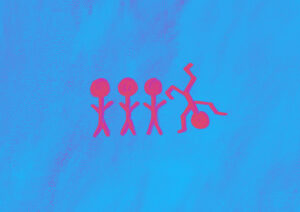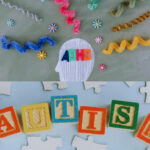Neurodiversity 1 of 7: Colourful people pretending to be normal

Neurodiversity was first described by the sociologist Judy Singer, neurodivergent herself, in her book “NeuroDiversity – the birth of an idea”, published in 2016
[1]. Although she was the first to coin the term “neurodiversity”, a recent article discusses how the concept has been collectively developed by neurodivergent people [2]. It is slowly gaining traction globally, and is the concept that describes Autism and ADHD in a way that is closest to what actually autistic and ADHD people experience, when compared to conventional descriptions of these concepts in medical science. There are more and more adult neurodivergents speaking out online about their experiences, helping to spread awareness and understanding. This is where I first came across this concept, and after years of in-depth research and radical self-examination, I could no longer deny that I, too, fit squarely into that category: neurodivergent.
Neurodiversity is a vast concept – even just Autism or ADHD are wildly complex topics by themselves, and I will not be able to do them justice fully in this article, no matter how strongly my autistic brain compels me to be
‘comprehensive’ in all my work. Instead, this series of articles will be an introduction to the concept, including aspects I personally find important for people to understand. Should you find your interest piqued, let it serve as a gentle nudge down the weird but wonderful rabbit hole that is Neurodiversity.
During my research into this topic, from scientific resources and from listening to neurodivergent people’s personal experiences, I have formed by own personal perspectives and ideas. This information is not meant to “tell you the ultimate truth”, but rather to spark your curiosity, stretch your mind, and invite you along on a thought experiment that proposes that maybe, just maybe, people with Autism or ADHD are not disabled, but rather represent an interesting and unique way that human brains naturally exist.
Read the next article in the series: Neurodiversity 2 of 7: My story
Read the next article in the series: Neurodiversity 2 of 7: My story
Resources
If any of this feels familiar to you, I encourage you to do more of your own research. When it comes to neurodiversity, it’s not about labeling yourself – it’s about understanding yourself. The resources below can help you get started.
One small word of caution: never label anyone else. Never tell your spouse/friend/brother/mother “I think you might be autistic”. It will not go down well. Allow people to discover themselves in their own time. Their neurodivergent brain is theirs, and theirs alone.
I put together a resource pack for neurodivergents to help them on their journey of self-discovery. If you are neurodivergent, or think you might be, or even if you’d simply like to learn more about it, download your free copy here: Neurodivergent Life: Simple Tools & Resources to Guide You Down the Rabbit Hole.
I also started a WhatsApp support group for neurodivergents since the public talks I gave, and this group has been a valuable space for sharing tools and helping each other understand and cope. Find the invite link here:
If you think you may be neurodivergent, take this online quiz to find out if you may have some neurodivergent traits: Neurodivergent traits Questionnaire NTQ (link button). This questionnaire is for self-understanding purposes only and does NOT serve as a diagnosis.
References
[1] NeuroDiversity: The Birth of an Idea. Singer J. 2019.
https://www.amazon.com/NeuroDiversity-Birth-Idea-Judy-Singer-ebook/dp/B01HY0QTEE
[2] The neurodiversity concept was developed collectively: An overdue correction on the origins of neurodiversity theory. Botha M, Chapman R, Onaiwu MG, Kapp SK, Ashley AS, Walker N. 2024. Autism.
https://pubmed.ncbi.nlm.nih.gov/38470140/#:~:text=This%20letter%20discus ses%20the%20origins,to%20one%20person%2C%20Judy%20Singer
- Share:
You may also like




